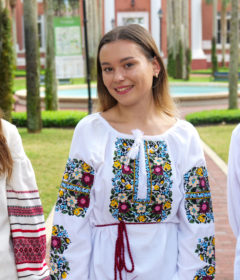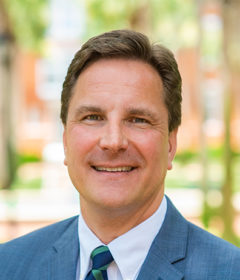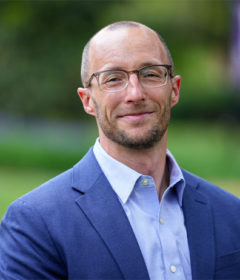The Rainmaker
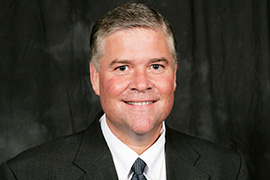
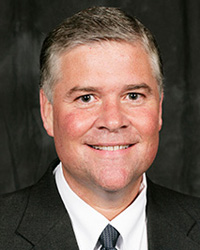
Jeff Ulmer, once an assistant strength and conditioning coach for the National Football League’s Tampa Bay Buccaneers, is doing some very heavy lifting these days. In April 2014, Ulmer arrived at Stetson as vice president for Development and Alumni Engagement. Today, that role puts him squarely in charge of Stetson’s comprehensive fundraising campaign, Beyond Success – Significance.
Ulmer’s resume, in addition to the NFL, includes successful fundraising stints at the universities of Florida, Central Florida and Mississippi, along with Vanderbilt University. As Stetson moves through its campaign, which unofficially began in late 2012 with a goal of $150 million, Ulmer’s diverse and impressive background is proving quite beneficial to a university harboring particularly ambitious plans.
What is the status of the Beyond Success – Significance campaign?
It’s multifaceted. In terms of numbers, we are where we need to be right now – $93 million. That’s a good number for us. When I arrived here two years ago, we were at $48 million. At that time, we hadn’t launched the campaign publicly. Fortunately, we got to $75 million – the 50-percent mark of our goal – and had a campaign kickoff (Oct. 16, 2015). The next big benchmark will be $100 million.
What is the key to such an effort? In other words, how are you getting this done?
We have begun to think more strategically in terms of million-dollar gifts to really move the needle. Culturally in approach, we changed. There was a lot of work done to hit $48 million, lots of great work. The big challenge then became identifying where the next leadership gifts were coming from. That’s the challenge you always run into midway through campaigns.
At the same time, the $50,000 gifts are very important. I can’t emphasize that enough. But this is a transformative campaign, and we need to reach the people who can make those transformative gifts. So, you need to spend time in those areas while you’re growing the lower levels. I think our biggest feather is growing our base.
Engaging alumni who haven’t been engaged before is the key. Woody O’Cain (executive director of Alumni Engagement) has really focused on getting more engagement, having alumni come back and/or attend events. Engagement is critical for the campaign, but also for the university. We must continue to create meaningful and beneficial engagement.
Giving is a learned behavior. Philanthropy comes naturally to a lot of people. But if we do our job explaining the importance of a $100 gift to the university, and talking about how that gift changes things on campus, people will write a check and say, “OK, let’s see how things go.”
How are these gifts impacting Stetson?
Thanks to generous private giving, numerous high-priority initiatives already have been funded. They include the Marshall and Vera Lea Rinker Welcome Center, the Stetson Institute for Water and Environmental Resilience, student scholarships, our international programs and many other initiatives. We have a transformational message for this campaign because this is truly a transformational time in the history of the university.
Just as an example, the new Institute for Water and Environmental Resilience is a first of its kind at Stetson. It will work to protect natural resources while also enabling students and faculty to participate across the entire university.
With students already benefitting, are they also part of the campaign?
Absolutely. I believe they are critically important to the campaign’s success. Students are really the end results – the great final products – of the gifts we’re receiving. I think it’s important to hear from students. One thing we have done very well is invite them to dinners with donors. Their messages are powerful, of how important scholarships are to them. They say: “If it weren’t for scholarships, I wouldn’t be in school.”
I remember one student who told a group about how she simply could not have afforded college. At the end of her testimonial, she said, “Now my aspiration is to be sitting out there among you as a donor.” That’s a powerful message.
Corporations play a key role too, correct?
Very important. Stetson has a long, great history. We hadn’t necessarily been in the forefront, saying, “Hey, we’re here, and we’re really good. And we’re growing.” There are a lot of influential people who graduated from this university — two governors, many legislators came through our hallowed halls and many others from the corporate world. Perhaps we don’t celebrate that enough. I think it’s important to embrace our history and let others know about it. There’s a wonderful story behind Stetson. Also, being historic is important, but only if you’re on the cutting edge and staying significant today in education and information. We definitely are doing that. We must continue telling that story. We have a lot to offer businesses. We’re opening those doors, and now they’re taking a look at Stetson in a different way.
– By Michael Candelaria
Editor’s note: For more about Jeff Ulmer and Stetson’s Beyond Success – Significance comprehensive campaign, read the upcoming Fall 2016 Issue of Stetson University Magazine.

